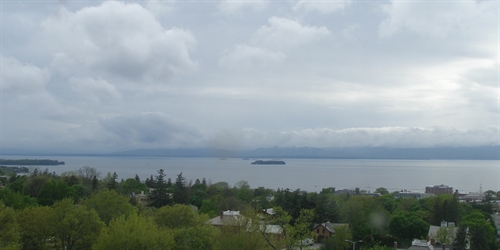Post and Beam Equity Group, LLC v. Sunne Village Development Property Owners Association, 2015 VT 60 [Filed May 15, 2015.]
ROBINSON, J. This case involves a dispute concerning access to property over a subdivision roadway. Defendant property owners’ association appeals a judgment for compensatory and punitive damages and for attorney’s fees awarded for a nuisance affecting the Plaintiff P&B’s restaurant. We affirm the judgment for P&B on its nuisance claim; uphold the award of punitive damages and attorney's fees; but reverse the award of compensatory damages because of the lack of evidence to support the award.
Nuisance. A private nuisance is a nontrespassory invasion of another's interest in the private use and enjoyment of land. To prove a nuisance, plaintiffs must demonstrate an interference with the use and enjoyment of another's property that is both unreasonable and substantial. An intentional invasion of another's interest in the use and enjoyment of land is “unreasonable” if the gravity of the harm outweighs the utility of the actor's conduct. The standard for determining whether a particular type of interference is “substantial” is that of definite offensiveness, inconvenience or annoyance to the normal person in the community.
The Association installed a guardrail that prevented access to P&B's property from Sunne Village Lane. The Association also put up numerous "Private Lane—Residents Only" signs. Ample evidence supports the court's findings that the blockade caused difficulties for vehicles (especially those towing trailers with snowmobiles), leading to complaints by patrons and lost business and revenue. The erection of the guardrails occurred without warning and just prior to the ski season, which was the busiest time of year for the restaurants. Given these facts, we have no difficulty in upholding the trial court's determination that the level of the Association's interference with P&B's use and enjoyment of its land was sufficiently unreasonable and substantial to be a nuisance.
Punitive damages. The requisite degree of actual malice to support punitive damages may be shown by conduct manifesting personal ill will or carried out under circumstances evidencing insult or oppression, or even by conduct showing a reckless or wanton disregard of one's rights. The trial court concluded that the Association’s board engaged in intentional, unreasonable, bad-faith, and malicious behavior, supporting an award of punitive damages in the amount of $5000. This behavior included insinuating that the Association would drive up litigation costs if P&B did not agree to meet various demands
The Association argues here that the findings of malice are not supported by the evidence and that there was no "evidence of personal animus." Even if the POA lacked any "personal animus" toward P&B, this would not preclude an award of punitive damages, because conduct that is not based upon personal hatred or dislike may nevertheless be malicious—it may be insulting or oppressive, or carried out with reckless or wanton disregard of another's rights. The findings were sufficient to support the conclusion that the Association’s actions in this case evidenced insult or oppression or were carried out in reckless or wanton disregard of P&B's rights.
Attorney’s fees. The court made this award under 27A V.S.A. § 4-117(a), the fee-shifting provision of the VCIOA, which provides that "[a] declarant, association, unit owner, or any other person subject to this title may bring an action to enforce a right granted or obligation imposed by this title, the declaration, or the bylaws. The court may award reasonable attorney fees and costs." The Association challenged the claimed attorney's fees, arguing that any legal fees incurred on common-law claims were distinct from the VCIOA claims to which the fee-shifting statute applies. On appeal the Association argues that P&B's VCIOA claims do not revolve around a common core of facts with the common-law claims. We acknowledge that this is a close case, but conclude that the trial court did not abuse its discretion in determining that most of the evidence presented was relevant to all claims.
Compensatory damages. We agree with the Association that the evidence of lost revenues relied upon by the trial court cannot support its finding concerning lost profits. The trial court here compared P&B's patronage after the Association placed the guardrail across the entrance with P&B's patronage during a comparable period the prior year. But without evidence of the impact of the reduction in patronage on P&B's costs, the court could not reliably quantify the lost profits. We simply do not know what costs, if any, P&B was able to avoid as a result of the drop in covers. On this record, any leap from lost revenues to lost profits is necessarily speculative. P&B's evidence need not have established its fixed and avoidable costs with "mathematical exactness," but P&B was required to present sufficient evidence to support a reasonable determination of its lost profits. In this case, P&B did not present even generalized evidence that its costs remained stable during the period in question.





No comments:
Post a Comment